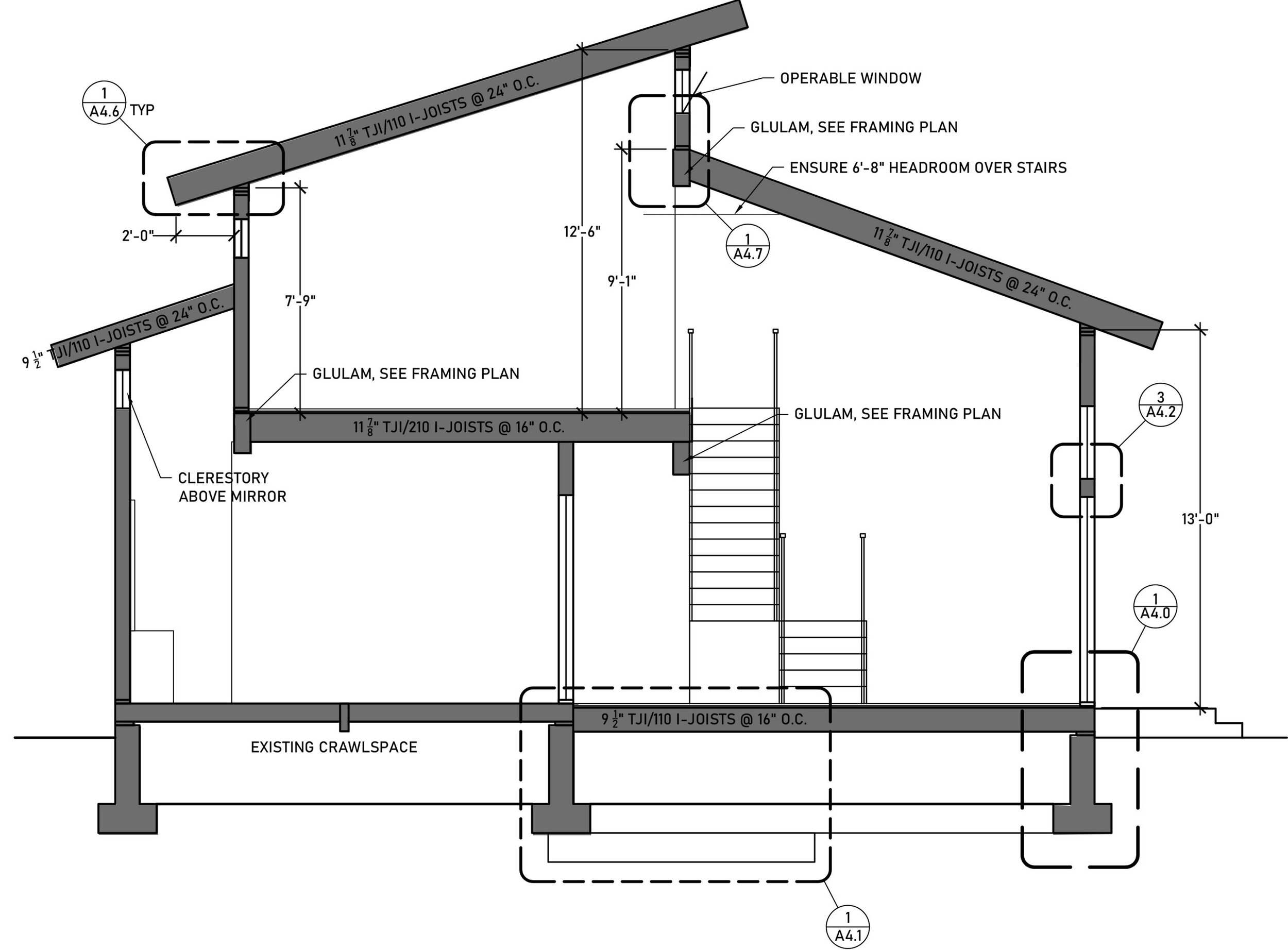Hi! I’ve started a series of posts to help homeowners understand what their architect will provide in final drawings. If you haven’t already, please check here to understand what type of project you have, so that you can check through the drawing list. Since each project is different, its drawing set will look slightly different too… but the project type page is a good place to start.
So, without further ado…
Building sections
Building sections are one of my favorite things to draw. Imagine if you took a building, cut a vertical line right across and all the way through it, peeled off the back half, and peered inside.
The Nefelejcs Projekt by Merge Invisible
It would look kind of like this, right? This is the Nefelejcs Projekt by Merge Invisible in Budapest, Hungary. It’s a thought-provoking urban art project, using data from the city archives and information from neighbors to recreate and mourn torn-down buildings in the 8th district. Save your old buildings and reuse them, folks.
Sorry, got distracted by art.
Building sections are incredibly useful tools for architects, engineers, and contractors. They help designers understand the constraints of a space. I use them a lot during design development to check stair clearances, joist depth, and ceiling heights. They’re important when coordinating various building components - if that overhead beam is 16” deep and a duct needs to run underneath it to get to the next room, what’s that going to do to our ceiling height??
Not only is a building section visually informative, but it’s also a road-map for construction details.
These bubbles pop up everywhere. They’re known as “callouts” and indicate that an area of construction is either atypical or very important to get right. You’ll see them circling footings, structural connections, windows, and roof eaves. They’ll have two numbers indicated. The top is the drawing number, the bottom is the page number. So for the callout above, you’d check drawing 3 on page A4.11 to see a larger detail of that building assembly.
There you have it. Building sections. They might look like just another drawing, but in terms of understanding the constructability of a building, they’re the MVP.



